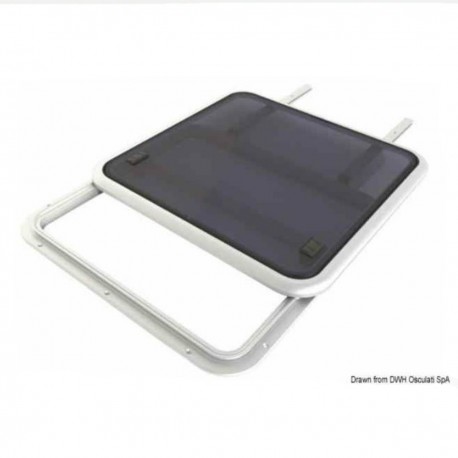- -10%
Prodotti alternativi
Description
- Allows ventilation in the driving areas
- Closing lever always remains in the same elevation and is easily accessible
- The hatch is unlocked by a bar that runs along one side
- In the ventilation position, the hatch moves out of the way by 2 inches, allowing air to pass through but at the same time preventing intrusion from outside
About Lewmar
Buying an anchor is not always an easy task. There are so many types, they vary in
Clearly, a 12-meter sailboat is not going to have the same needs as a fishing boat or yacht, so during the purchase you should always keep an eye on both the size and the bottom that the boat will face.
How many types of anchors are there?
TheAdmiralty strain anchor is the one in the common imagination. It is a highly efficient accessory but little used in recreational vessels because it is heavy and bulky. Its validity, however, derives precisely from its significant weight and the position of the flukes, which make it excellent for various types of seabed from sandy to seagrass-rich. For a yachtsman, it is best taken as an anchor of hope.
The plowshare anchor, on the other hand,
From 1972, on the other hand, we get the Bruce anchor, named after the naval engineer Peter Bruce, which works very well in all bottoms except particularly muddy or rocky ones, the only flaw being stowage, which is made particularly complicated because of its shape.
Another still good one is the umbrella one designed specifically for smaller boats as a small, foldable lightweight tool (just like an umbrella), which, however, has some shortcomings in terms of holding except in particularly rocky bottoms.
Usually all shipyards rely on multi-purpose anchors forbasic equipment, then leaving free choice to the boater for possible change dictated by his habits and the seabed needs he expects to face. As a general rule of thumb, flat and large, stump or bruce anchors work on gravelly and sandy bottoms, while thin flukes, or croup and umbrella anchors for example, are designed for rocky or muddy bottoms.
The advice, however, is to always equip oneself with a respect anchor/safe/reserve. In fact, all boaters, with the exception of those who own a really small boat, should always have two anchors with different characteristics on board. Assuming that you own a Bruce anchor and that the bottom where you want to lower it is predominantly rocky,
Lewmar






